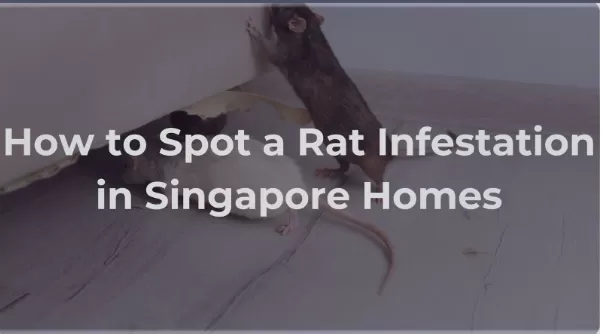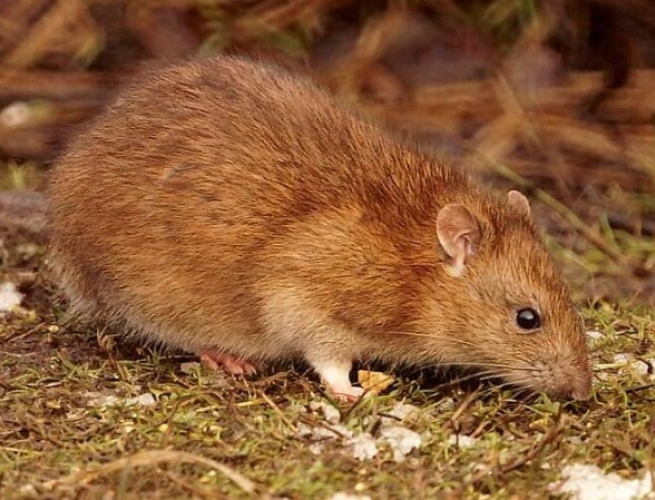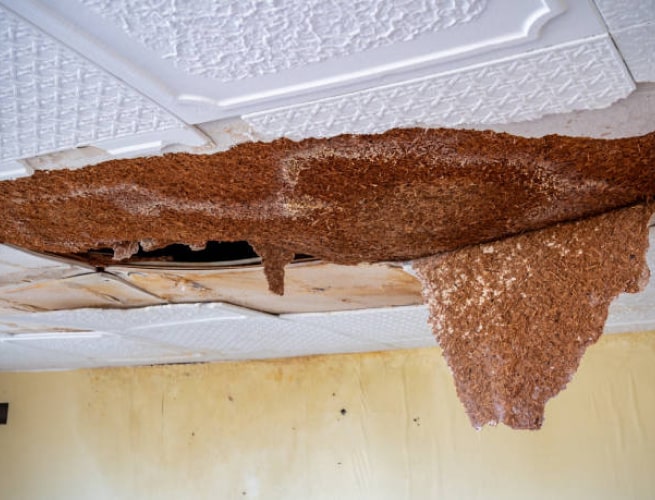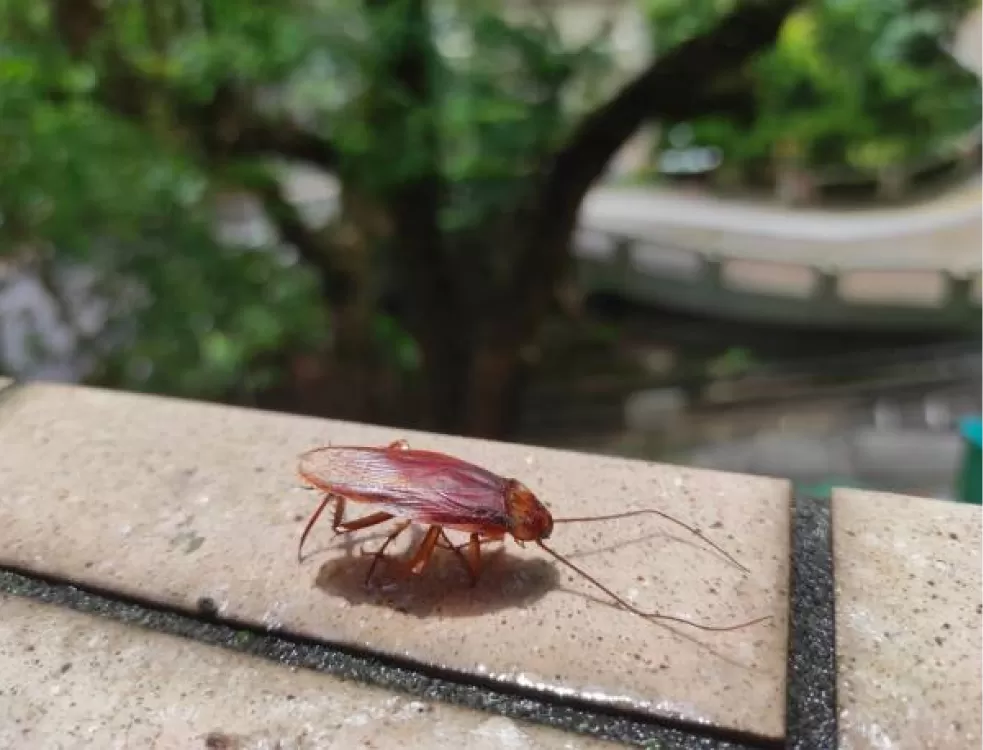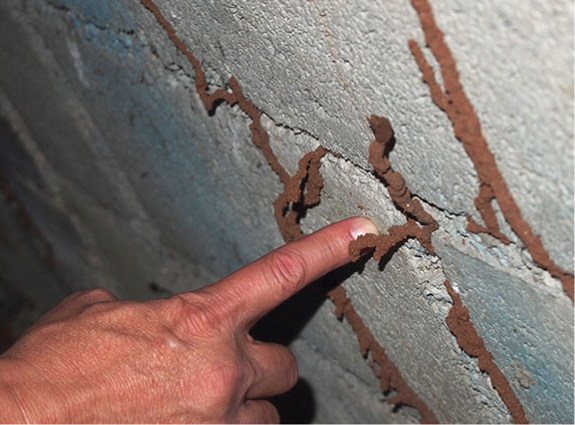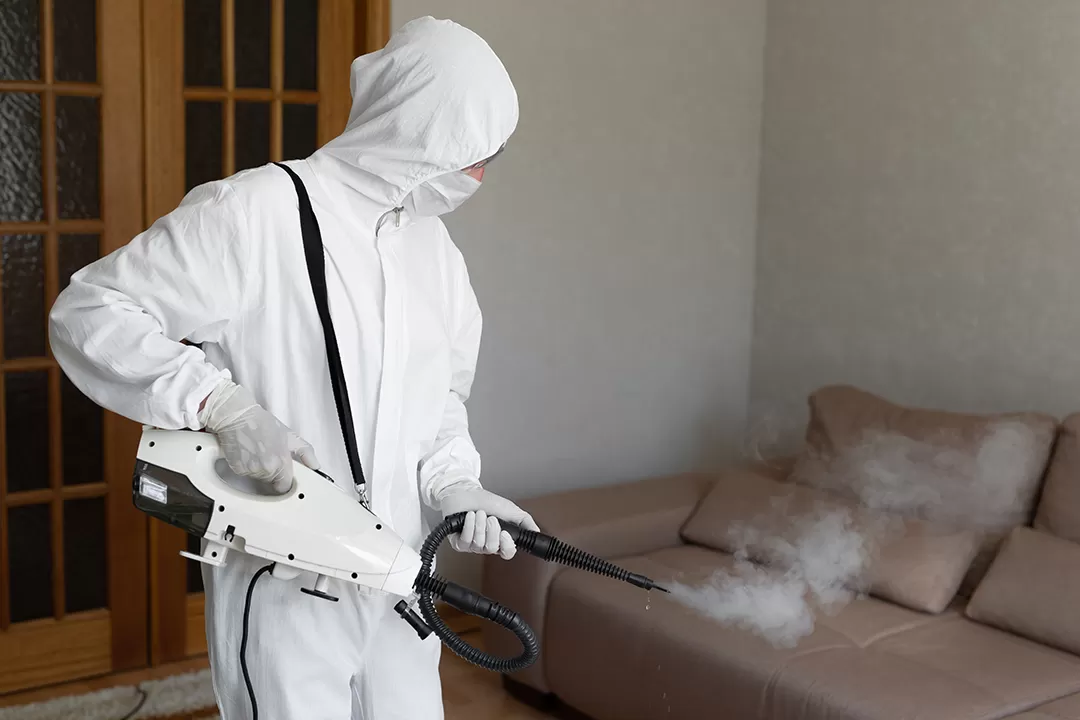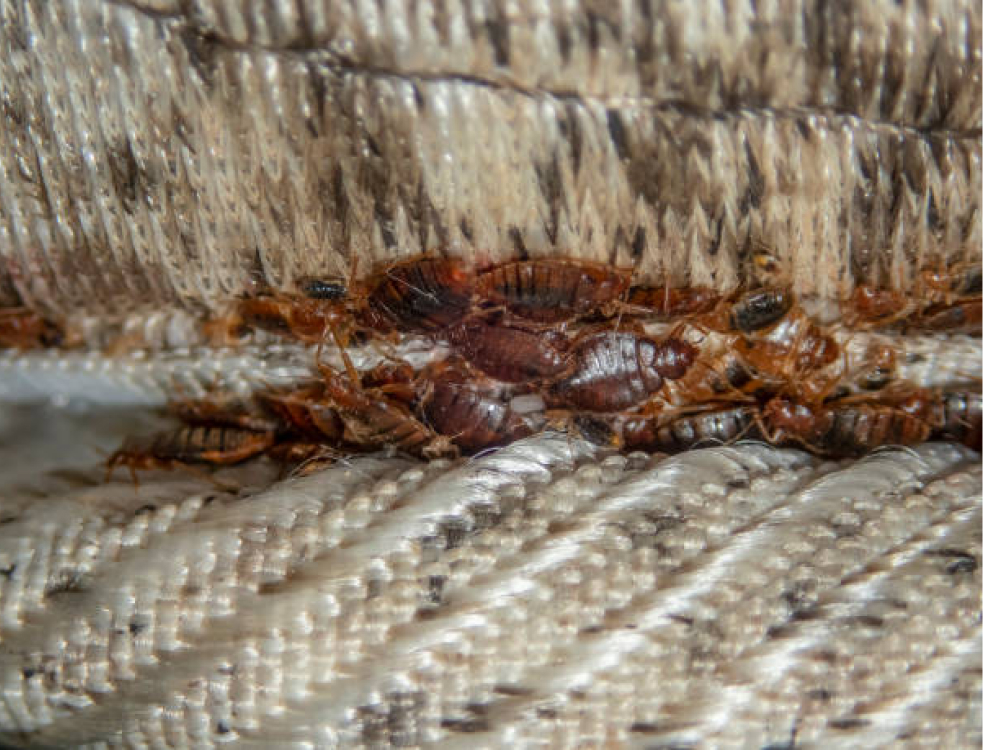Rats are not merely a nuisance; they can present significant health risks, including diseases such as leptospirosis, and inflict considerable damage on your home. If you have a suspicion that your living space may be hosting these unwelcome guests, it is essential to recognize the signs of a rat infestation. From unusual noises during the night to droppings, gnawed items, and even peculiar odors, this guide will assist you in identifying these telltale indicators. Furthermore, it is important to discuss prevention strategies, the necessity of prompt action, and how professional pest control services can aid in reclaiming your home from these intruders, especially in densely populated areas like Singapore where rat activities are prevalent.
Key Takeaways:
- Look out for unusual noises in the night, as rats are nocturnal creatures and can often be heard scurrying around.
- Keep an eye out for droppings, urine stains, and gnawed items, which are all signs of a rat infestation.
- If you spot any signs of rats in your home, it is important to contact a professional pest control service immediately to prevent further infestation and potential health risks.
Unusual Noises in the Night
Unusual noises during the night can often suggest a concealed rat infestation in your home or premises, particularly in urban areas like Singapore, where the rat population can surge if not effectively managed.
These noises may manifest as scratching, squeaking, or scurrying sounds, which serve as clear indicators of rodents, such as roof rats, making their presence felt. If these sounds occur frequently, it is essential to address the situation promptly to prevent a larger infestation from taking hold.
It is worth noting that one rat can rapidly multiply to become two million in just two years without appropriate pest control measures in place.
Droppings and Urine Stains
One of the most significant indicators of a rat infestation is the presence of rat droppings and urine stains, which are often found in concealed corners, near food sources, or along the usual pathways within your home. The NEA has reported an increase in rat sightings and droppings, emphasizing the need for proactive pest management. Recognizing these signs is essential, as they not only indicate that unwanted guests have made themselves at home but also serve as a warning that immediate action is necessary to protect your health.
Understanding how to identify these droppings is crucial. Rat feces are typically dark, pellet-shaped, and approximately the size of a grain of rice, while urine stains can manifest as yellowish marks in areas where rats have been active. These unpleasant signs are not merely a nuisance; they pose significant health risks.
Among these risks is leptospirosis, a serious infection that can arise when humans come into contact with rat urine or contaminated surfaces. Leptospirosis can result in symptoms such as fever, chills, and even liver damage, making it vital to address a rat infestation promptly.
To effectively tackle this issue, it is important to act swiftly. Implementing pest control measures not only reduces health risks but also helps maintain a clean and safe living environment.
Gnawed or Damaged Items
If you observe gnawed or damaged items in your home, it may be a strong indication of a rat infestation. These rodents are well-known for their tendency to chew through various materials in their quest for food and nesting areas, often resulting in significant property damage as they scavenge and establish their homes.
Common items that frequently succumb to their relentless gnawing include:
- Electrical wires, which can present serious fire hazards if not addressed promptly.
- Packaging materials, which may compromise the safety of stored goods, such as food items.
- Stored goods like cardboard boxes, clothing, and furniture, which can become unrecognizable after a rat’s intrusion.
Addressing rodent-related damage is essential, not only for preserving property but also for mitigating health risks associated with rodent droppings and contamination.
Implementing effective pest control strategies is vital for managing infestations swiftly and safely, ensuring that home environments remain hygienic and secure.
Nests and Burrows
Finding nests or burrows in your garden or around your property is a clear indication of an active rat infestation In Singapore, the number of rat burrows detected in public areas has raised concerns among stakeholders about the effectiveness of current pest control measures. These rodents often establish their homes in secluded areas, making them ideal for raising their young. Understanding the characteristics of these nests and burrows is essential for effective pest management.
Typically, rats prefer to build their nests in quiet, hidden locations, such as:
- Underneath sheds or decks
- In dense vegetation or piles of debris
- Within wall voids or attics
These nests are usually constructed with a variety of materials, providing insulation and comfort for their offspring.
Common materials include:
- Dried leaves
- Grass and twigs
- Paper and cardboard
In Singapore, the rat population has been exacerbated by inadequate waste management practices, which create ample food sources and shelter opportunities for these pests. Consequently, focusing on sustainable waste management is crucial to deter infestations and promote a cleaner environment for all residents.
Grease Marks on Walls and Surfaces
Grease marks on walls and surfaces are a common indicator of rat activity. These marks are left behind by the oils in the fur of rodents as they move through your home. In Singapore, thermal surveillance and infrared cameras have been used by pest control companies to detect rat activities and track their movements for more effective pest management.
These distinct markings, often found at entry points like baseboards or around cupboards, signal potential trouble. When you notice grease marks, it’s important to recognize that they indicate more than just an unsightly stain; they suggest that a rodent is frequenting the area, likely in search of food sources.
In many instances, these greasy trails can reveal the established routes that rodents take, highlighting areas of your home where they feel secure. However, it is crucial not to rely solely on detection. Engaging a pest control team to assess these signs and implement appropriate measures ensures a thorough approach to managing the issue. This not only enhances your home’s safety but also helps prevent future infestations.
To further safeguard your home, consider these steps:
- Monitor for additional signs, such as droppings or gnaw marks.
- Inspect areas around food storage, as these are prime targets for rat foraging.
- Maintain cleanliness, which can discourage these unwanted visitors.
Strange Smells
If you begin to detect unusual odors, particularly musty or ammonia-like scents, it may indicate a rat infestation, as these smells typically arise from rodent droppings and urine. Promptly addressing these odors is essential, as they not only signal the presence of pests but can also pose significant health risks to those exposed.
Overlooking these signs could lead to serious health issues, including infections such as leptospirosis, which may be contracted through contact with contaminated surfaces or water. Therefore, it is crucial to not only identify these odors but also to implement pest control measures to effectively address the issue and safeguard the occupants of the area.
These health risks underscore the importance of acting swiftly. Here are some potential diseases associated with rodent infestations:
- Leptospirosis: A bacterial infection that can result in severe illness with symptoms similar to the flu.
- Hantavirus: A serious respiratory condition that can be transmitted through exposure to rodent droppings.
- Salmonellosis: A foodborne illness often linked to contamination caused by rodents.
By ensuring that appropriate pest control measures are enacted, one can mitigate these odors and significantly reduce the risk of these serious health threats. Regular inspections and maintaining cleanliness can greatly decrease the likelihood of infestations.
Sightings of Live or Dead Rats
Sightings of live or dead rats in your home or surrounding areas are among the most concerning indicators of a rat infestation, signaling a serious rodent problem that requires immediate action.
The presence of these rodents not only threatens the integrity of your living space but also raises significant public health concerns. Rats are known carriers of numerous diseases, some of which can be transmitted to humans, making it essential to address these issues without delay.
If you encounter such sightings, it is important to consult with professional pest control companies that specialize in rodent management. These experts will thoroughly assess the severity of the infestation and implement necessary measures, which may include:
- Conducting comprehensive inspections
- Identifying entry points
- Setting traps or bait stations
- Educating homeowners about prevention techniques
By taking these steps, you can significantly reduce health risks and create a safer environment for yourself and your family.
Chewed Electrical Wires
If you happen to find chewed electrical wires in your home, it serves as a serious warning sign of a rat infestation. These rodents often gnaw on wires to gather nesting material or to wear down their continuously growing teeth, which can create significant fire hazards. The problem of rats in Singapore has been compounded by improper waste management and inadequate refuse chutes, which provide easy access to food and shelter, particularly in urban areas like Hougang and Toa Payoh.
When considering household safety, the consequences of damaged wiring and rat burrows cannot be emphasized enough. Chewed wires pose not only immediate risks of electrical shorts and rat sightings but also increase the likelihood of unexpected fires. The energy flowing through these compromised wires can produce sparks, potentially leading to disastrous outcomes. This rat infestation problem not only endangers your property but also puts the health of animals and humans and the lives of those residing in the home at risk.
In such circumstances, the importance of engaging pest management services becomes crucial. By addressing the rat infestation problem promptly, you can greatly reduce the chances of further damage to your home’s electrical systems. A professional can identify entry points and implement preventative measures to keep unwanted pests away.
Some important steps to consider include:
In Singapore, the National Environment Agency (NEA) plays a crucial role in promoting effective pest management and waste management strategies that help in controlling rat populations, particularly in areas like Toa Payoh and Hougang.
- Immediate inspection of damaged wires
- Investing in pest control services
- Implementing rodent-proofing strategies
Signs of Infestation in Neighboring Houses
Noticing signs of rat infestation in neighboring homes can serve as a critical warning that your own property might also be at risk. Rats are known to travel between residences in search of food and shelter, so it’s important to be proactive about community awareness to effectively address this widespread issue.
Effective pest control is not solely an individual endeavor; it significantly relies on the cooperation of everyone in the vicinity. When residents collaborate to share information about potential rodent sightings and sanitation practices, the chances of successfully eradicating the infestation increase substantially.
- Raise awareness about the importance of keeping trash properly sealed and stored.
- Encourage property inspections to identify any vulnerabilities.
- Share resources on effective rodent deterrents and traps.
When each household participates, it establishes a community-wide defense, creating a less hospitable environment for these unwanted pests. Ultimately, the combined efforts of neighborhood residents can lead to successful pest management, making it vital for everyone to remain vigilant and communicate any concerns promptly.
Contacting a Professional Pest Control Service
Reaching out to a professional pest control service is typically the most effective approach when addressing a rat infestation. These experts have the knowledge and tools required to manage the problem efficiently and ensure long-term prevention.
Why Is It Important to Address a Rat Infestation Immediately?
It is essential to address a rat infestation promptly, as these pests can reproduce at an alarming rate. If left unchecked, they can pose significant health risks and inflict considerable damage to property.
In fact, one rat can potentially become two million in just two years, underscoring the urgency of taking action in this situation.
How Can One Prevent a Rat Infestation in Their Home?
Preventing a rat infestation in your home requires taking proactive measures, such as managing refuse properly and eliminating food sources that may attract these pests.
To effectively keep these unwelcome visitors at bay, residents should implement a combination of strategic tactics. Begin by securing trash bins with tight-fitting lids to deter any rummaging.
- Next, ensure that all potential entry points, including gaps in walls and around plumbing, are sealed to block their access.
- It is also important to maintain a clean environment by regularly cleaning up crumbs and spills, as these can serve as open invitations for rodents.
- Additionally, consider participating in community efforts, such as neighborhood clean-up days, to address larger refuse issues that may attract rats.
By adopting these pest control practices, individuals can not only safeguard their homes but also enhance the overall well-being of their community.
What Are the Health Risks Associated with a Rat Infestation?
A rat infestation presents considerable health risks, as these rodents are known carriers of various diseases, including leptospirosis, which can affect both animals and humans through contaminated urine.
Plus leptospirosis, other serious illnesses associated with rats include hantavirus, salmonella, and tularemia. Each of these diseases contributes to a growing public health concern. The transmission of these diseases to humans can occur easily, particularly in areas where rat populations flourish. This underscores the urgent need for increased awareness and the implementation of preventive measures.
To effectively address these health risks, it is crucial for communities to recognize the importance of regular pest control strategies. Establishing effective rodent management programs not only helps to reduce infestations but also plays a vital role in safeguarding public health.
Informed residents can take proactive steps, such as:
- Storing food securely
- Sealing entry points in their homes
- Participating in community clean-up initiatives
By adopting these practices in conjunction with professional pest control services, individuals and communities can significantly mitigate the risk of disease transmission from rodent urine and rat droppings associated with rat infestations. Awareness is the first step toward protecting health, and it is essential to confront this issue directly for long-term safety.
Ultimately, the fight against rodents is not merely about eliminating a nuisance; it is about ensuring that everyone remains healthy and safe in their surroundings. Public health awareness is crucial for fostering a collective response to this pressing issue.
How Can a Professional Pest Control Service Help with a Rat Infestation?
A professional pest control service can significantly aid in managing a rat infestation by employing specialized techniques and tools specifically designed to effectively eliminate and prevent rodent populations.
These services typically adopt a multi-faceted approach, addressing not only existing infestations but also minimizing the likelihood of future occurrences. Key strategies include:
- Monitoring: Regular inspections and checks help in identifying any signs of rat activity and potential entry points.
- Trapping: Various traps are strategically placed to capture rodents without causing harm to other wildlife, facilitating humane control.
- Sanitation Practices: Implementing rigorous sanitation measures, such as sealing food sources and removing garbage, is crucial in making environments less enticing to pests.
By adhering to these methods, pest control professionals provide a comprehensive approach to pest management that aligns with recommendations from the NEA, thereby protecting both homes and communities from future infestations.
What Are the Different Methods of Rat Control?
Different methods of rat control involve a combination of preventive measures, trapping, and baiting, all of which are essential for effective rodent management in both residential and commercial properties.
Understanding the importance of a multifaceted approach is crucial, as exemplified by the two-month surveillance cycle in Singapore. It is not enough to rely on just one strategy; rather, a series of complementary techniques must be implemented to effectively reduce the risks posed by these persistent rodent populations in Singapore. Preventive measures play a particularly vital role, as they help eliminate potential food sources and nesting areas, thereby decreasing the likelihood of an infestation.
Various trapping techniques can be effective in quickly addressing existing rodent populations. While baiting can also yield results, it should be approached with caution due to the potential risks it poses to non-target species, including pets and wildlife. Sustainable pest control practices aim for immediate outcomes but also take into account the long-term implications for the ecosystem.
Some effective strategies include:
- Utilizing eco-friendly traps, as highlighted in reports by the Straits Times
- Employing natural deterrents
- Maintaining regular sanitation to minimize attractants
These integrated methods collectively create a balanced approach to rodent management, highlighting the significance of sustainable strategies to ensure pest control that is both effective and environmentally responsible, as the NEA and Town Councils have advocated.
What Are the Common Mistakes People Make When Trying to Get Rid of Rats?
One common mistake that individuals often make when attempting to eliminate rats is relying exclusively on DIY methods without fully grasping the complexities of rat control measures and rat behavior.
This approach can lead to misplaced confidence and limited effectiveness, as it frequently overlooks essential factors such as the rat’s nesting habits, food sources, and potential entry points into the home. Many may resort to traps and poisons without adequate knowledge of their effectiveness or safety protocols, which can inadvertently pose risks to pets and children.
In contrast, engaging professionals in pest control ensures a thorough assessment of the situation and the implementation of targeted strategies.
Key considerations include:
- Understanding the rat’s lifestyle and habits, including their preference for bin centres and refuse chutes
- Identifying entry and nesting points
- Using appropriate bait and traps
- Avoiding common hazards associated with DIY treatments
By addressing these elements through expert intervention, individuals can establish a more lasting solution to a rat infestation problem, while significantly reducing the chances of recurrence. This is crucial for maintaining health and safety in premises, especially in areas where rats and mice are prevalent.
Frequently Asked Questions on Rat Infestation and Control in Singapore
What are some warning signs of a rat infestation, including rat burrows detected in Singapore homes?
Some common warning signs of a rat infestation in Singapore homes include rat droppings, gnaw marks, grease marks, and sightings of rats or their nests. Rat burrows detected in public areas and squeaking sounds can also indicate a problem.
How can I tell the difference between rat droppings and other pest droppings while conducting pest surveillance?
Rat droppings are typically dark and cylindrical in shape, with pointed ends. They are usually around 1/4 to 1/2 inch in length and have a strong, musty odor. Conducting pest surveillance can help in accurately identifying these droppings.
What should I do if I spot a rat or detect rat activities in my home?
If you spot a rat or detect rat activities in your home, it is best to contact a professional pest control company immediately. They have the necessary expertise and equipment to safely and effectively remove the rodents from your home, contributing to better pest management.
Are there any specific areas of the home where rats are more likely to infest, such as food premises or refuse chutes?
Rats are most likely to infest areas where they have easy access to food sources and water, such as kitchens, pantries, and garbage areas. They also tend to hide in dark, secluded areas like attics, basements, and crawl spaces. Food premises and refuse chutes are other common hotspots for rats.
How can I prevent a rat infestation in my home, and what are the effective control measures?
To prevent a rat infestation and ensure effective control measures, it is important to eliminate potential food and water sources, seal any cracks or openings in the home, and keep your home clean and clutter-free. Regularly inspecting your home for signs of rats can also help prevent an infestation. Engaging pest control efforts, including sustained rat surveillance, is also beneficial.
Can rats cause any health issues for humans, and how does the National Environment Agency (NEA) recommend handling them?
Yes, rats can carry and transmit diseases to humans, such as leptospirosis, hantavirus, and rat-bite fever, which can spread through the urine of rodents. The National Environment Agency (NEA) recommends addressing a rat infestation as soon as possible to protect the health and safety of your family. Their advice includes engaging professional pest controllers and implementing comprehensive pest control programmes.


